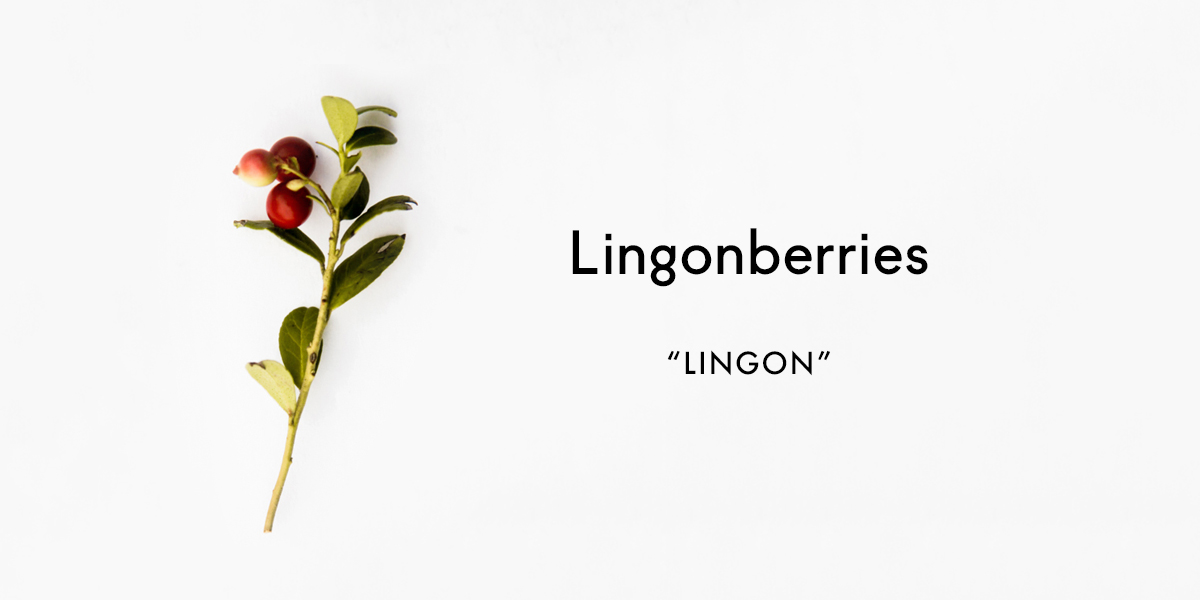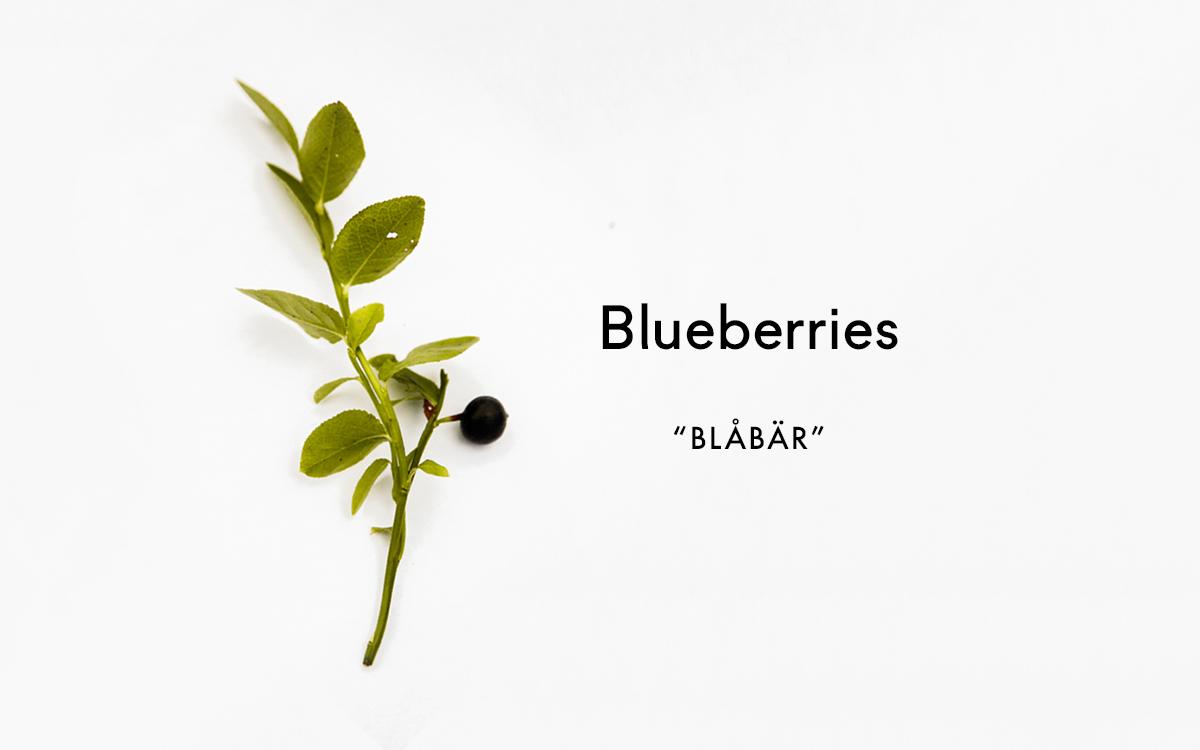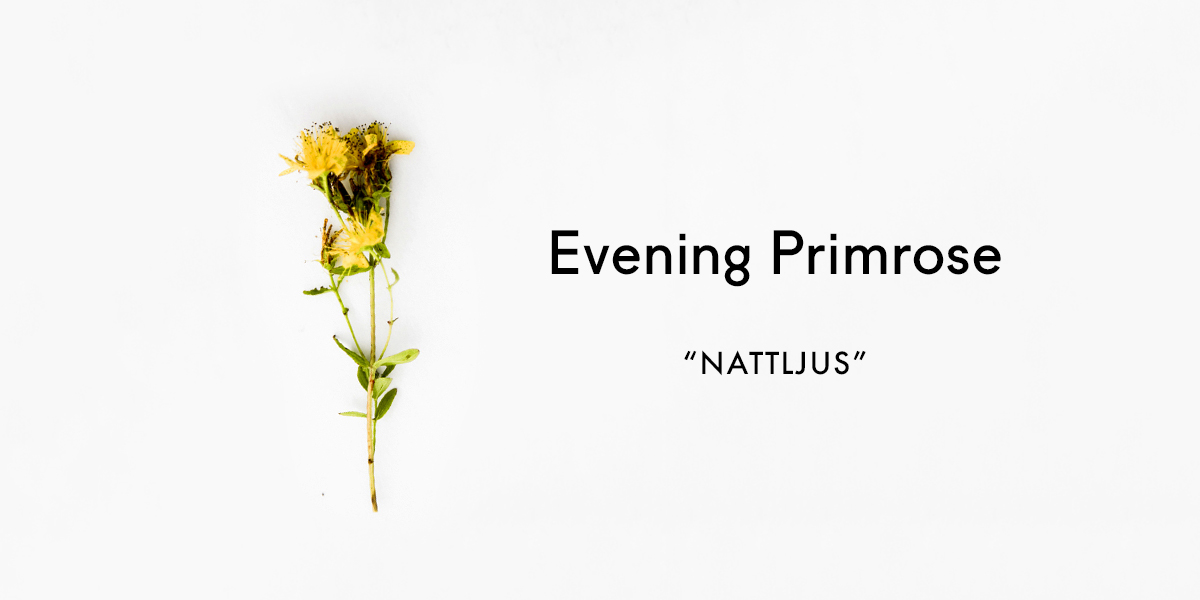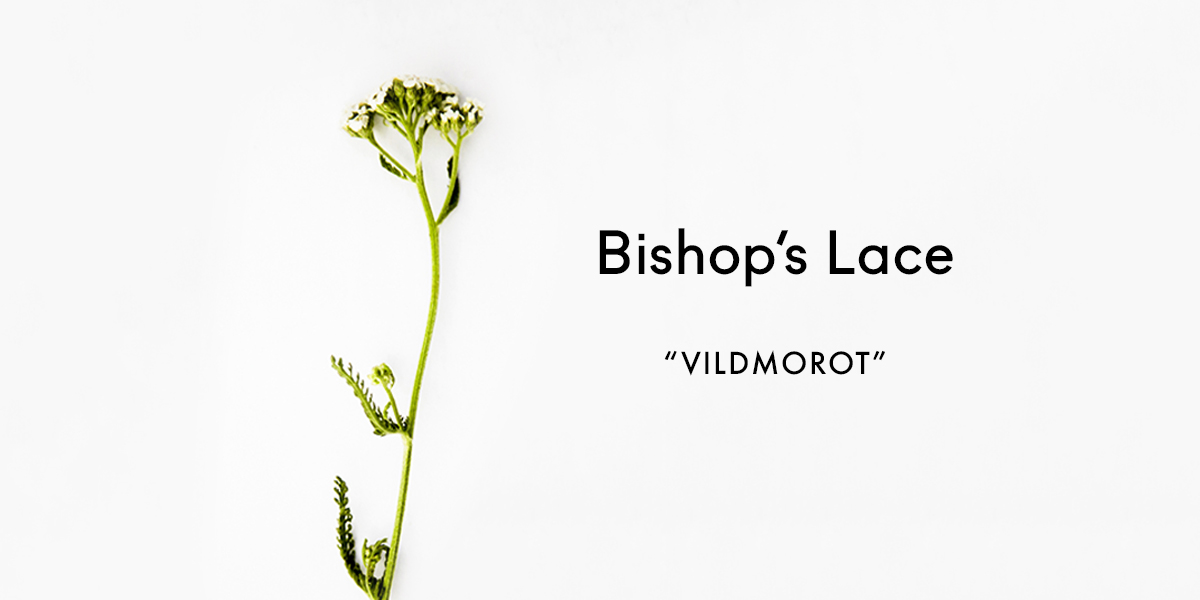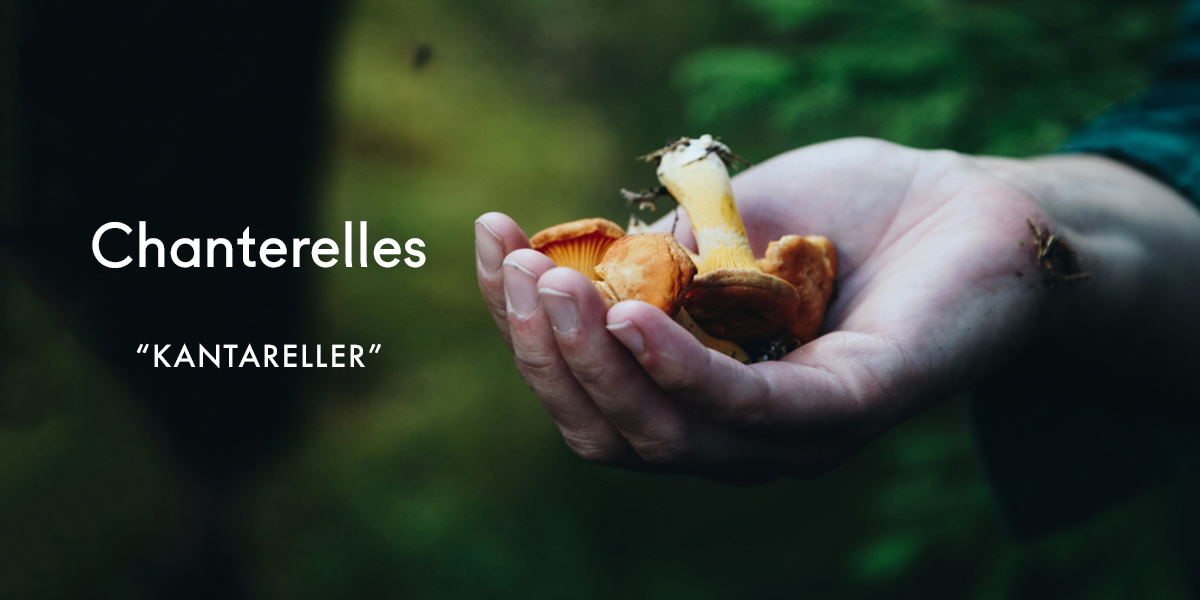Foraging is as old as humankind; it’s a uniquely primal experience to walk through a forest, collecting plants to eat. Foraging facilitates a deep connection with one’s surroundings in both time and space, as all plants have their own season and terrains in which they flourish. With the rise of New Nordic cuisine, which focuses on local and seasonal ingredients, foraging’s popularity has spiked across Scandinavia.
Of course, foraging isn’t some fad that’s unique to Scandinavia. It’s human and global. In Australia we have bush tucker. Recently, in an absurd quest to come up with content that would link our Scandinavia-based website with India, I began clutching at straws while talking to an Indian travel consultant:
— Me: “Do you have anything like New Nordic in India?”
— Indian travel consultant: “New Nordic?”
— Me: “You know, eating local produce, eating with the seasons…?”
*pause*
— Indian travel consultant: “Ma’am, we’ve been doing that for 5,000 years.”
That pretty much says it all.
Should you find yourself in Scandinavia, and specifically Sweden, and the urge and/or need to forage strikes you, here’s how to do it:
Important: never eat anything unless you are 100% sure of its origin. Plants can look alike but be vastly different. Always triple check! We strongly recommend that you forage, at least for your first few times, with someone who has expertise in this area. If you’re not sure, do not eat it.
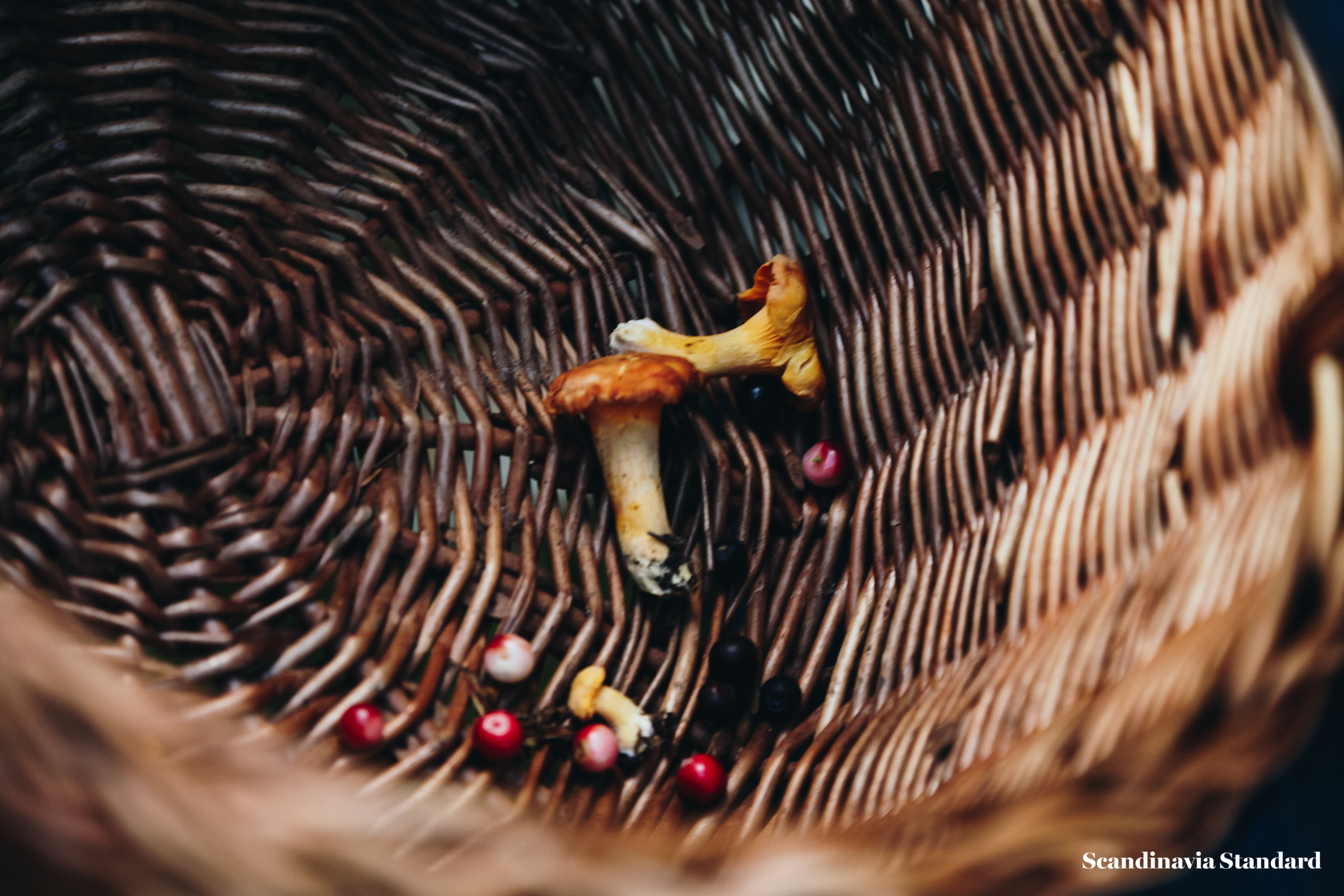 | |
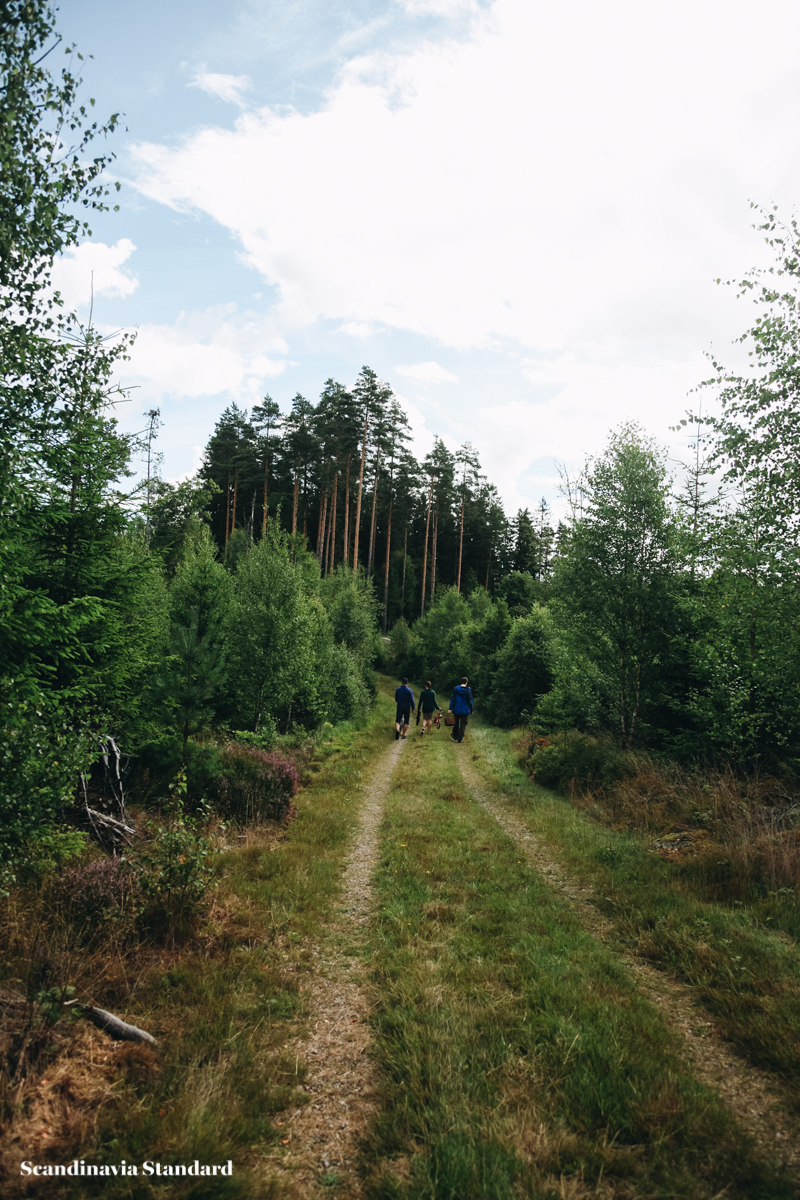 |  |
Where can you forage?
Over half of Sweden is covered in forest. This not only makes Sweden the perfect location for filming indie music videos, but also provides a smörgåsbord of forage-able culinary delights. In the summer, the forests overflow with chanterelles, and berries ripen to perfection under the midnight sun.
If you want to find forests in Sweden: look outside! They’re literally everywhere. That’s my pro tip. There are plenty of national parks and hiking routes that are perfect for a foraging expedition.
In Sweden, there is an ancient Swedish customary law referred to as “Allemansrätten”, meaning “All Men’s Right”. It allows you to roam in any wood, meadow or field to forage for wild food. As long as you don’t cut down trees or break twigs, the owner of the land can’t stop you or ask for compensation. It assumes mutual respect between landowners and ramblers, and gives opportunity for anyone to pick wild fruits almost anywhere.
Too good to be true? Well, obviously there are a few limitations, but they’re very common sense. You may not enter the grounds close to houses or homes, or fenced enclosures, and shouldn’t touch cultivated plants or crops. There are some rare protected species of flowers that you shouldn’t touch, but that’s the thing: they’re rare.
The law even allows you to camp for one night in any forest or meadow under these rules. As long as you don’t camp within sight of houses, and ask for permission to make a camp fire, you’re right as rain! And, of course, when you leave your camp site, it should be in the same condition as when you came!
Standard Stuff
Be Careful
Be Considerate
|
|---|
What do you need?
Not too much! Just some scissors (Finnish brand Fiskars do the trick!) and a big basket or container. A scrabbler, a wide fork-like tool, can also be useful by stripping a bush very quickly (but remember: don’t completely strip it!).
What’s next?
Go to a forest and explore!
It’s exciting when you realise that it’s possible to cook with a little wild food every day. I see my foraged goodies as my daily vitamin fix; wild herbs have much higher amounts of vitamins and minerals than supermarket varieties.
Don’t expect to make an entire meal from foraged goodies in the beginning. It takes time. The forest isn’t a supermarket; it’s more of a condiments collection.
 | |
 |
Each forest is different, providing its own unique varieties. While Sweden is a forager’s dream, your own home country will have its own unique plants available. In Denmark there are apps like Byhøst, or my new favourite app: Wild Food created by Rene Redzepi that includes inspiring recipes too.
During July, I took part in a small summer festival in a summerhouse near Rydaholm in central Sweden. Fifty strangers quickly became friends as we were introduced to the mind-boggling world of foraging. We headed into the forest, jogging along in knee-high wellies with our wicker baskets swinging, and this is what we found:
Note: this is just a starter guide. There are hundreds more varieties than shown here: cloudberries! morsels! As with all foraging, it depends on where you are and the time of year.
Name | Lingonberries – Lingon (Swedish) |
Scientific name | Vaccinium vitis-idaea |
Where? | Lingonberries grow in the wild on small bushes in the Swedish woodlands and on moorlands. |
When? | Late July – September. |
Recommended recipe | It doesn’t get much better than Magnus Nilsson’s Meatballs and sugared lingonberries from the Nordic Cookbook |

Name | Blueberries – Blåbär (Swedish) |
Scientific name | Vaccinium corymbosum |
Where? | Blueberry bushes are sometimes found on roadsides and tend to be in big patches. The bushes are usually low to the ground and have small, eye-shaped dark leaves. |
When? | They are plentiful in late summer, mid-July – August. |
Recommended recipe | Blueberry and elderflower pie |
 | |
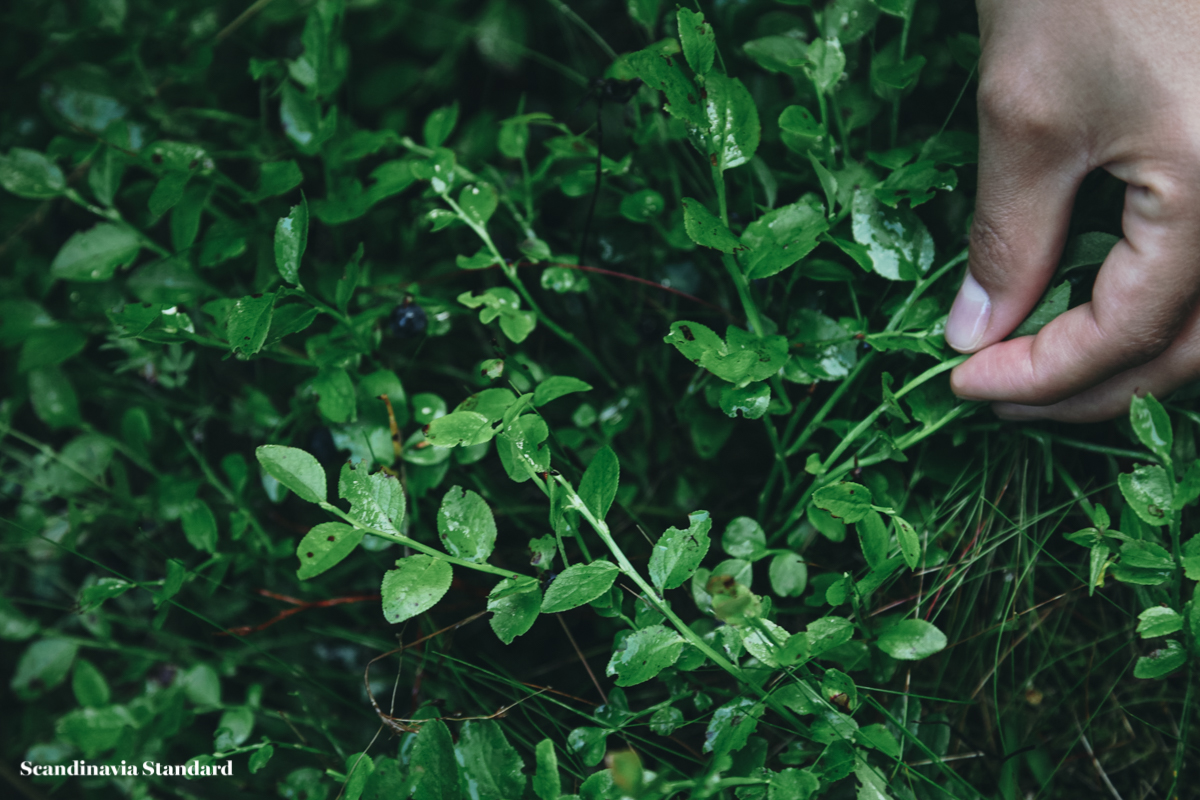 |
Name | Raspberries – Hallon (Swedish) |
Scientific name | Rubus idaeus |
Where? | Look for clearings in the forest. Wild raspberry bushes grow best in full sunlight. |
When? | They are plentiful in late summer, mid-July – August. |
Recommended recipe | You’ll need to eat them quickly! Wild raspberries are much more delicate than their domesticated counterparts. Check out this Marmalade of Seasonal Berries. Also, keep an eye out for its yellow cousin: the cloudberry (hjörtron), which are also delicious! |
Wild Strawberries. Also the name of the most optimistic film by Swedish film director Ingmar Bergman. The original Swedish title is Smultronstället, which literally means “the wild strawberry patch” is an allegory for an underrated gem of a place, often with sentimental value. Swedes talk about their wild strawberries with lyrical devotion. The strawberries are, in fact, very different to their Danish counterparts.
Name | Wild strawberries – Smultron (Swedish) |
Scientific name | Fragaria vesca |
Where? | They’re tiny! These fragrant, pencil-eraser–sized strawberries are hard to find but well worth the effort. |
When? | Early June – July. |
Recommended recipe | Given the effort that goes into finding these delicacies, do as the Swedes do and eat them simply with cream or ice cream. Alternatively, this Wild Strawberry-Infused Wine would make an excellent Sunday project |
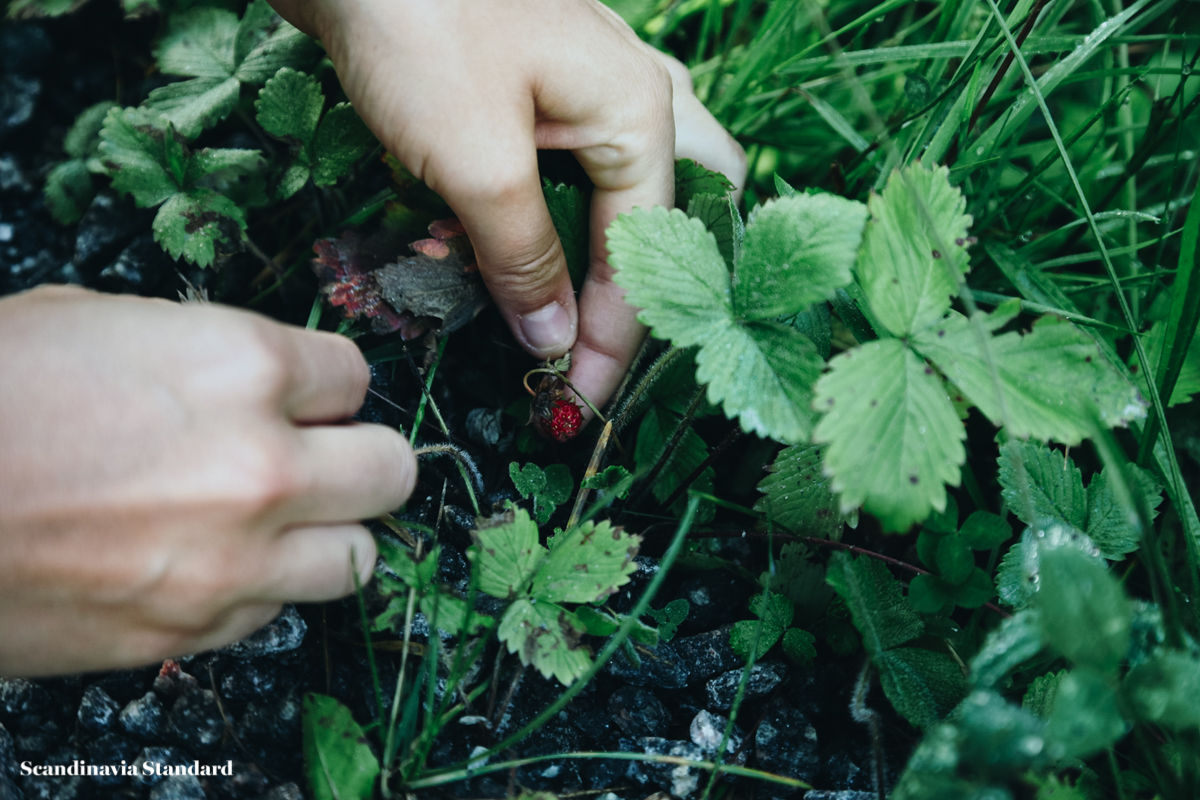
There is an old Swedish saying: “De är sura, sa räven om rönnbären,” (They are sour, said the fox about the rowan berries). It comes from Aesop’s fable about a fox that cannot reach some grapes on a high vine and announces that they are sour. But since rowan berries are actually sour, the point of the idiom is somewhat lost in Swedish. Oh well.
Name | Rowan Berries – Rönnbär (Swedish) |
Scientific name | Sorbus aucuparia |
Where? | Rowan Berries are bright orange in colour, and grow on trees that grows up to between 5 and 15 metres in height. Often found beside roadsides throughout Sweden. |
When? | The berries emerge in August and September. |
Recommended recipe | Rowan Berries are extremely sour, and so should never be eaten fresh. However, in the event of a night’s frost, they develop a pleasant aroma, and become quite useful for recipes. You can then convert them into Rowanberry Jelly, to be served with deer, moose or even with cheese and crackers (yum!). If you like compotes, this Rowan Berry Compote with Wild Apple is packed with vitamins A and C. Magnus Nilsson uses Rowan berries throughout his Nordic Cookbook. You could even try your hand at making Rowan Berry Wine! |
Caution | Once again: do not eat fresh Rowanberries! They contain high levels of parasorbic acid, which can cause kidney damage. Once frozen or heated, however, they become non-toxic. Please only use them as directed in recipes and be very careful about consumption. |
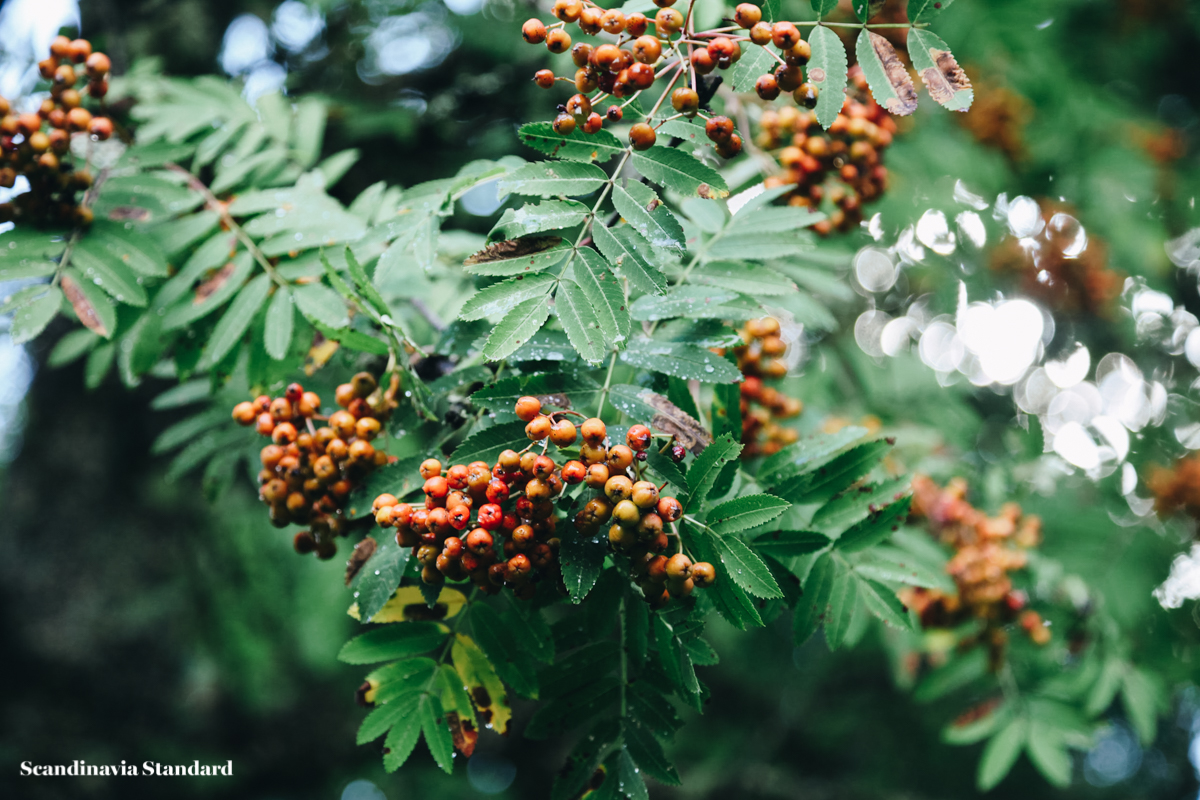
Name | Tansy – Renfana (Swedish) |
Scientific name | Tanacetum vulgare |
Where? | In flower meadows and roadsides. |
When? | The flowers bloom from July – August. |
Recommended recipe | Do not eat Tansy. It’s a very bitter ancient herb that is no longer used in cooking due to its toxicity and reports of terribly painful deaths (seriously: DO NOT EAT). Instead, use it as an insecticide; it’s perfect for keeping mosquitos and flies away. |
Caution | Tansy carries risk of liver damage, bleeding, and spontaneous seizures. Do not eat it. |

Name | Evening Primrose – Nattljus (Swedish) |
Scientific name | Oenothera biennis |
Where? | Waste areas, meadows, beaches and roadsides. It grows in the sun. |
When? | Flowering time: July – August. |
Recommended recipe | Although this plant largely known as medicinal, it is also a great source of food. It’s very edible. The leaves of the second year plant can be used as greens. The roots of the first year plant can be eaten raw in small quantities, or roasted, and taste like a turnip or parsnip with a hint of pepper. The flowers taste amazing so toss them into a salad. While young, the seed pods can be roasted and ground to release the oil (but don’t roast them too much, you’ll destroy the beneficial properties of the oil). You can tell whether it’s a first year or second year plant by looking for a rosette of leaves left from the first year. |
Caution | Evening Primrose oil can be a powerful and is used for a range of ailments. It should be used with caution, especially if you have multiple conditions or are using other medications. I am not a doctor, and recommend you talk to a doctor before beginning use. |
Name | Bishop’s Lace – Vildmorot (Swedish) |
Scientific name | Daucus carota |
Where? | It grows as a “weed” in meadows and roadsides. |
When? | It blooms in summer and autumn. |
Recommended recipe | You can use the stems, but the fruit is particularly good as a spice, peppery with hints of coriander and carrot. |
Name | Wood sorrel or Sourgrass – Harsyra (Swedish) |
Scientific name | Oxalis acetosella |
Where? | Look for open areas between trees where there isn’t a lot of sunlight. |
When? | Depending on the weather conditions, it grows April – June. |
Recommended recipe | Check out this Wood Sorrel Granita from Vild Mad |
Caution | Wood Sorrel contains oxalic acid, which is also in spinach and black tea. While it’s not considered problematic when consumed in moderation and in a balanced diet, people with gout, rheumatism and kidney stones should avoid it. Thankfully there are no poisonous look-alikes. Clover is often mistaken for wood sorrel but is not poisonous. |
 |  |
Name | Chanterelles – Kantareller (Swedish) |
Scientific name | Cantharellus cibarius |
Where? | Look for Chanterelles on mossy forest floors where large colonies can pop up, especially after heavy rain. |
When? | Chanterelle season is entirely dependent upon rainfall. No rain, no mushrooms. It’s best to look two to three days after heavy rainfall, especially when it’s humid (making a wet Swedish summer the perfect Chanterelle season). |
Recommended recipe | Can’t top this: Butter-fried chanterelles with South Jutlandic lardo |
Caution | It is possible to mistake Chanterelles for false Chanterelles. I recommend watching a full video, because they are very similar so educating yourself is essential. Make note of the differences in the gills, colour, shape and smell. Be careful when inspecting the mushroom. It’s important to wash your hands after inspecting a mushroom that is suspect, and don’t let it near your other foraged items. |

Name | Cep Mushrooms – Karl Johan Svamp (Swedish) |
Scientific name | Boletus edulis |
Where? | Under large oak, beech and spruce trees. |
When? | In summer they pop up between June – September. |
Recommended recipe | Fried and dried cep from Vild Mad |
Caution | This is a great mushroom for foraging newbies because it has distinguishing features, making it a safer mushroom to pick. Cep mushrooms have a very spongy top, and on the underside are tiny tubes, rather than gills. Again, I recommend watching videos to make sure you’re familiar with its features and dangers, and draw from these presenters’ contagious foraging enthusiasm! |
 |  |
Happy foraging!
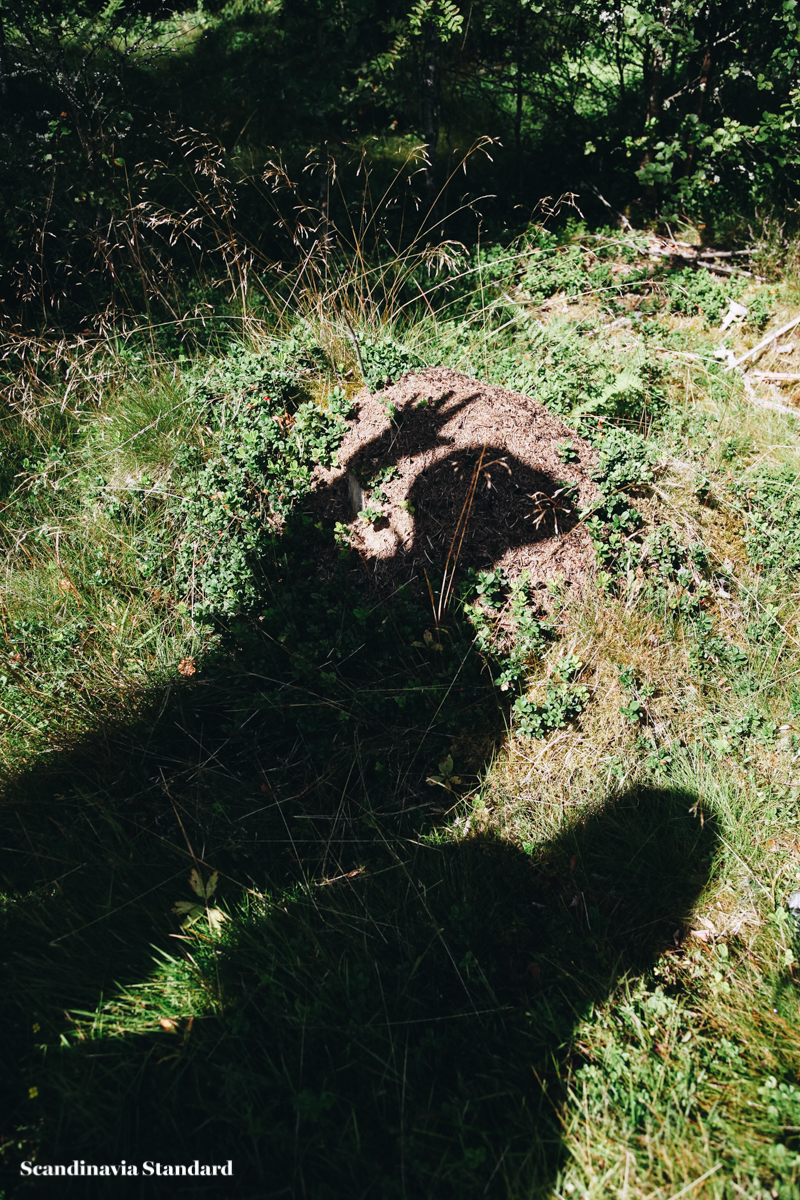 |  |
Photography by Freya McOmish.


